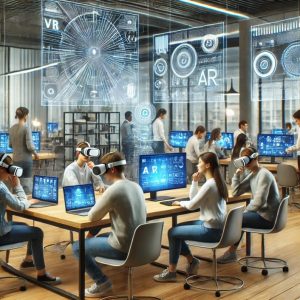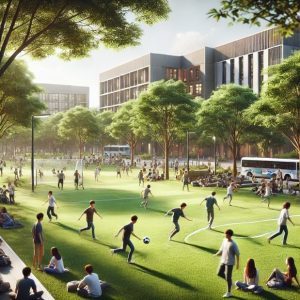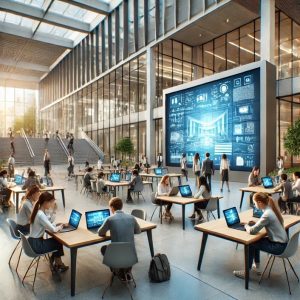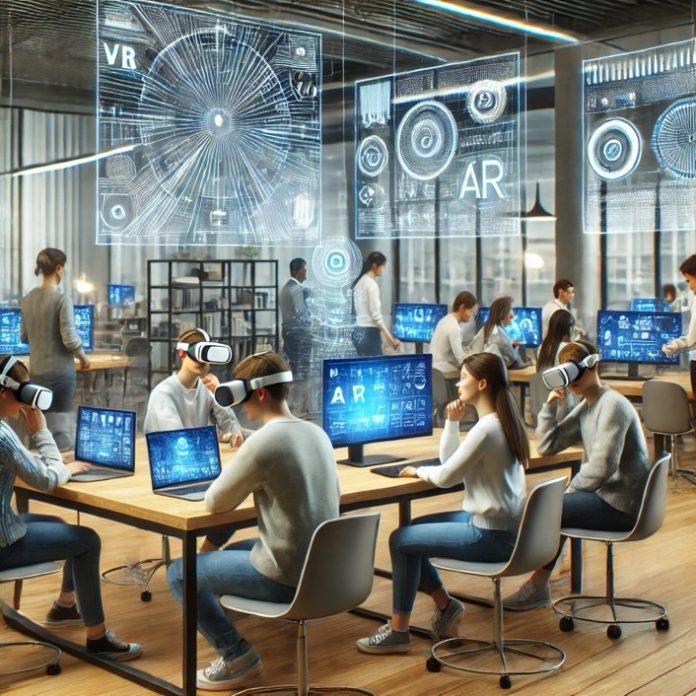As education shifts increasingly toward digital platforms, especially accelerated by the global pandemic, the role of traditional college and university campuses is undergoing a significant transformation. E-learning has become more prevalent, offering flexibility and accessibility to students who can access high-quality education from anywhere in the world. With this evolution, one might ask: What is the future role of the physical campus in an increasingly digital educational landscape?
The Growing Shift Toward E-Learning
E-learning is not just a trend but a fundamental shift in how education is delivered. The convenience and flexibility of online courses have made higher education more accessible than ever before. Students no longer need to be physically present in a classroom to gain access to world-class knowledge and instructors. Platforms such as MOOCs (Massive Open Online Courses) and Learning Management Systems (LMS) allow students to take courses at their own pace, interact with peers globally, and gain skills that are directly applicable to the job market .
For many universities, this shift has driven a reevaluation of how education is structured. Online education has the potential to cater to a more diverse group of students, including working professionals, international learners, and those in remote areas. As e-learning gains popularity, the traditional role of the campus as the primary hub for education is evolving.
The Evolving Role of Campus: From Instruction to Interaction
While e-learning provides unprecedented flexibility, the campus will continue to play a crucial role in shaping the holistic student experience. Here’s how the campus of the future can adapt and transform:
1. Social and Collaborative Learning Spaces
The traditional classroom setting may shift from lecture-based to interaction-based. Universities are already starting to reimagine their spaces to support collaboration and peer-to-peer learning, a trend that will likely continue. Students still crave social interaction, and campuses can become hubs for group projects, discussions, and hands-on experiences that complement the digital learning environment.
In this new model, campuses could become centers for collaborative learning, where students gather to work on group assignments, participate in workshops, and interact with their professors in more meaningful ways. These spaces will foster creativity and innovation, emphasizing teamwork, problem-solving, and real-world applications of knowledge.
2. Practical and Experiential Learning
E-learning is excellent for delivering theoretical knowledge, but practical, hands-on experiences still require physical presence. For disciplines like engineering, medicine, architecture, and the arts, universities will continue to provide labs, workshops, and studios where students can engage in experiential learning.
In these fields, the role of the campus will be to provide state-of-the-art facilities for research and practical skill development. Students will engage in simulations, laboratory work, and project-based learning that require tools and environments not easily replicated online .
3. Campus as a Hub for Innovation and Entrepreneurship
Many universities are transforming parts of their campuses into hubs for innovation, entrepreneurship, and research. These spaces provide students and faculty with the resources to develop and prototype new ideas, work on start-ups, and collaborate with industry partners. With the growth of interdisciplinary studies and the increasing importance of innovation in education, campuses are becoming more like incubators for the next generation of entrepreneurs and researchers.
Universities are fostering start-up culture by hosting innovation labs and centers where students can work with mentors, pitch ideas, and turn academic projects into viable businesses. This entrepreneurial ecosystem can offer students hands-on experience and help them bridge the gap between education and employment.
4. Enhanced Support Services and Networking
While e-learning platforms provide educational content, they often lack the personalized support that students need to succeed academically and personally. The physical campus will remain a vital hub for student services, offering mental health counseling, career services, and networking opportunities that help students navigate both their academic journey and their transition into the workforce .
Additionally, campus-based activities like internships, recruitment events, and alumni networks provide students with opportunities to build professional connections and receive career guidance, which are more challenging to replicate in a fully virtual environment.
5. Cultural and Extracurricular Engagement
Beyond academic learning, universities play an important role in the cultural and personal development of students. Sports, clubs, student organizations, and cultural events foster a sense of community and belonging. These activities contribute to the development of soft skills like leadership, communication, and teamwork—essential attributes for career success.

In the future, campuses will continue to be hubs for extracurricular engagement, providing spaces where students can meet like-minded peers, participate in athletic programs, and engage in cultural experiences that enrich their college life .
The Hybrid Model: Blending E-Learning with Campus Experience
As universities adapt to the growing demand for e-learning, many are embracing hybrid learning models, where digital and physical learning coexist. In these models, students may complete the majority of their coursework online but come to campus for collaborative work, practical labs, and social interaction. This blend of online and in-person learning provides students with the flexibility they desire, while still offering the advantages of a physical campus.
In a hybrid model, the role of the professor also evolves from lecturer to mentor and facilitator. Professors will engage with students during in-person sessions to discuss real-world applications, case studies, and collaborative projects, while the core knowledge and lecture-based content are delivered through e-learning platforms .
Conclusion: The Campus of the Future
As we look toward the future, it’s clear that e-learning will continue to grow in importance, but the physical campus will not disappear. Instead, its role will transform from a center of instruction to a place of interaction, collaboration, and experiential learning. Universities will need to reimagine their spaces to support the evolving needs of students and prepare them for the future of work.

In the coming years, the most successful institutions will be those that can seamlessly integrate e-learning with the unique benefits of campus life, providing students with a comprehensive, flexible, and engaging educational experience. The transformation is not about choosing between e-learning and the campus, but about blending the two to create a more effective, dynamic, and holistic learning environment.
References
“Why Bite-Sized Learning is Revolutionizing Corporate Training: The Future of Employee Development.” 5mins.ai, September 30, 2024. https://www.5mins.ai
“Reaching the Digital Natives: Effective Training Delivery for Gen Z.” Training Industry, September 2023. https://www.trainingindustry.com
Amelia Dunlop and Alicia Serrato. “Rethinking How to Help Gen Z Thrive at Work: Strategies to Motivate, Inspire, and Reward.” Deloitte Digital, October 2, 2023. https://www.deloittedigital.com


